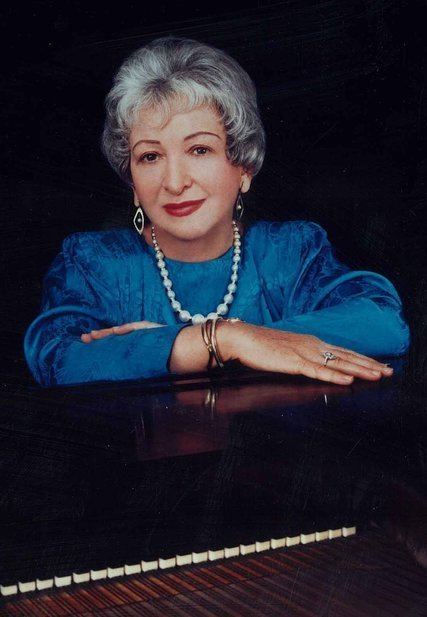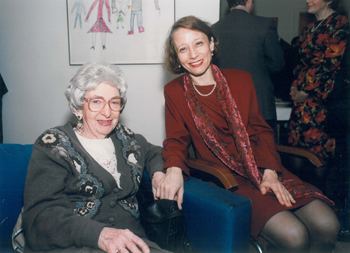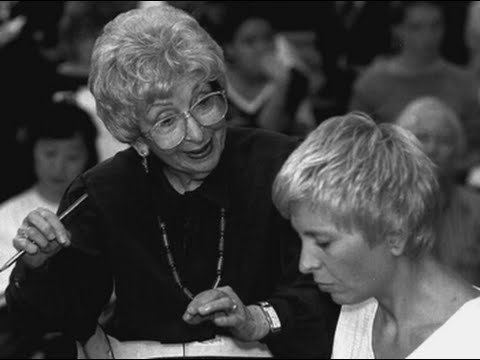Name Dorothy Taubman | ||
 | ||
Died April 3, 2013, Brooklyn, New York City, New York, United States | ||
Part 1 choreography of the hands the work of dorothy taubman
Dorothy Taubman (August 16, 1917 – April 3, 2013) was an American music teacher, lecturer and founder of the Taubman Institute of Piano, who developed the "Taubman Approach" to piano playing. Her approach to piano technique was based on an analysis of the motions needed for virtuosity and musical expression, but at first earned a reputation through its high rate of success in curing playing injuries. It provoked controversy by questioning the physiological soundness of some tenets of traditional piano teaching.
Contents
- Part 1 choreography of the hands the work of dorothy taubman
- Choreography of the hands the work of dorothy taubman
- History
- Coordinate Motion Theory
- SynergyInvisibility
- Research
- Computer typing
- References

Choreography of the hands the work of dorothy taubman
History

Taubman directed the Dorothy Taubman Institute of Piano at Amherst College in Massachusetts from 1976 to 2002. Formerly a professor at the Aaron Copland School of Music of Queens College and a professor at Temple University, she has been featured in numerous articles and interviewed in the Boston Globe, The New York and the Los Angeles Times, Piano Quarterly, Piano and Keyboard, and Clavier magazines. Among others, Taubman has been noted for her work with injured musicians including the celebrated American pianist Leon Fleisher, who was forced to play with only one hand for many years due to injuries he sustained playing at the piano; with the piano teacher Edna Golandsky, who was Taubman's principal teaching assistant and associate director of the Institute; and with Dr. Yoheved Kaplinsky, chair of the Piano Department at the Juilliard School.

Besides offering a rational, diagnostic system aimed at solving the musical and physiological problems of piano interpretation, the techniques Taubman pioneered have been used therapeutically to treat repetitive strain injuries related to piano playing, and generally to rehabilitate injured pianists. Her techniques have been adapted to computer keyboard typing.
Coordinate Motion Theory

Taubman was best known for her development of a new piano technique, which she called coordinate motion. Her teaching method springs from a best-practice theoretical model which defines the biomechanical roles and conditions necessary to move efficiently at a musical instrument. These parameters are:


In Taubman’s model, control, power and virtuosity are a matter of timing, reflexes and coordination, not strength, independence or brute force. Coordinate motion takes the biomechanical limits of the body parts doing work as the central consideration in all technical problems.
Synergy/Invisibility
Many critics dispute Taubman's notion that forearm rotation is an essential feature of a virtuoso technique, particularly in scale playing. They argue that such a forearm movement would be ungainly, interfere with fast passage work, and make independence of the fingers impossible. Taubman herself was deeply concerned with this question, as she had observed many times in her students that an overlarge rotational movement would interfere with speed and control. Yet she paradoxically observed both forearm rotations and the walking arm in virtuoso pianists capable of easily performing any texture, as did her antecedents.
Taubman adduced that the seemingly discrete technical elements coalesce into a synergistic whole, minimizing the need for each, potentiating their separate, individual effect, yet blending into a seamless unity that only a trained observer can discern separately. Each technical element must be present in the right timing and amount in order for this synergy to occur. For example, in and out reduces the need for rotation. The walking arm reduces it still further, shaping reduces the need for in and out, and for rotation, while at the same time reducing the need for the walking arm. Rotation can reduce the need for shaping in many textures. The use of gravity reduces the subjective sense of physical effort in every action, and the need for each discreet technical element. Proper keystroke timing reduces it further still. Both gravity and proper keystroke timing increase the available physical resources needed to produce a large sound, et cetera.
While certain textures may take on the predominant visual character of a single technical element if the terrain requires it, the others are still present but microscopic. Thus, the true nature of a virtuoso technique becomes invisible to the untrained observer. If just one of the technical elements is not present correctly, however, then dysfunction ensues.
Research
Taubman's theory of coordinate motion has become the object of a continuing line of scientific inquiry carried on in professional journals, peer-reviewed literature, and conference papers, influencing the diverse fields of music teaching, medicine, ergonomics, and other related disciplines. This distinction makes Taubman almost unique in music pedagogy. She and William Vennard are the only contemporary music teachers to have their technical approaches withstand the scrutiny of scientific investigation.
The emergence of Music Medicine as a field of clinical practice is a relatively recent event. As this is the case, the specialty has not yet presented many answers about the fundamental nature of musicians' injuries. For example, it has been known for some time that musicians experience injuries related to playing an instrument occupationally at an unusually high rate. Injuries at the piano have been related to specific technical practices. It is clear that both professionals and conservatory students can be affected, and that musicians' injuries are similar in range and severity to other occupationally induced repetitive strain injuries. Yet orthodox medical approaches do not yet provide a clear answer as to a prime cause; even a best-practice model of treatment is still evolving.
Taubman's technical model sheds new light on the subject in the clinic, the laboratory and the field. Micklem began his inquiry into the biomechanical nature of Taubmans' approach in the late 1980s. Pereira collaborated with the Taubman Institute in the mid-1990s, using surface electromyogram studies of Taubman-trained pianists performing various techniques, measuring quantitative changes in muscular activity as techniques changed. During their professional collaboration at the Taubman Institute, both Taubman and Golandsky presented numerous papers and presentations to music medicine conferences covering their theories, methods and outcomes working with injured pianists. Dybvig and Scolnik, both students of Taubman and Golandsky, extended the field of inquiry into Taubman's claims of efficacy using her methods with sufferers of focal dystonia.
Computer typing
The adaptation and extension of Taubman's approach to computer users have proven efficacious, with good to very good clinical outcomes when coupled with a comprehensive, multi-modality case-management approach in an industrial setting. Dempster first outlined a practicable adaptation of Taubman's technical model to the computer keyboard. Dempster's subsequent clinical outcomes suggested that Taubman's approach could in fact be adapted to the computer keyboard successfully, and with similar clinical outcomes. Using expanded research methods, he was able to show quantitative changes in the muscular activity of injured legal typists, correlated with a decrease in reported symptoms, that supported Taubmans' original hypothesis that coordinate motion was indeed therapeutic. The approach was further corroborated by Griffen and her successful clinical outcomes., An independent case review performed by Lawrence Livermore National Laboratory using Dempster's training protocol as a study method showed that returns-to-work could be successful over the long-term, which suggests that technique may in fact be causal in repetitive strain injury cases at the computer. Independently, Pascarelli and Kella described a similar taxonomy of technical issues correlated with injuries at the computer keyboard. They concluded, as did Taubman, that incorrect technique may be an essential intrinsic risk factor of injury, and that technique retraining should be included in treatment plans for upper extremity RSI sufferers.
